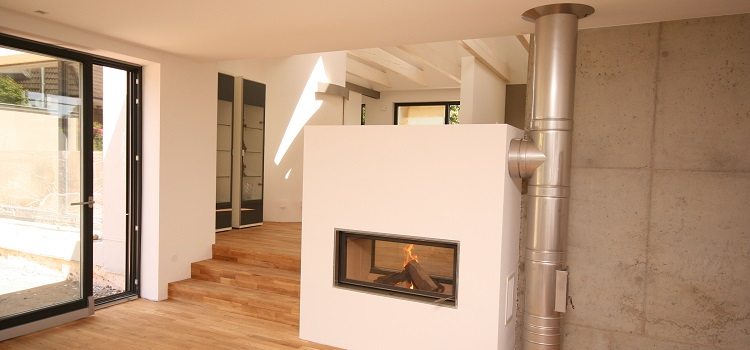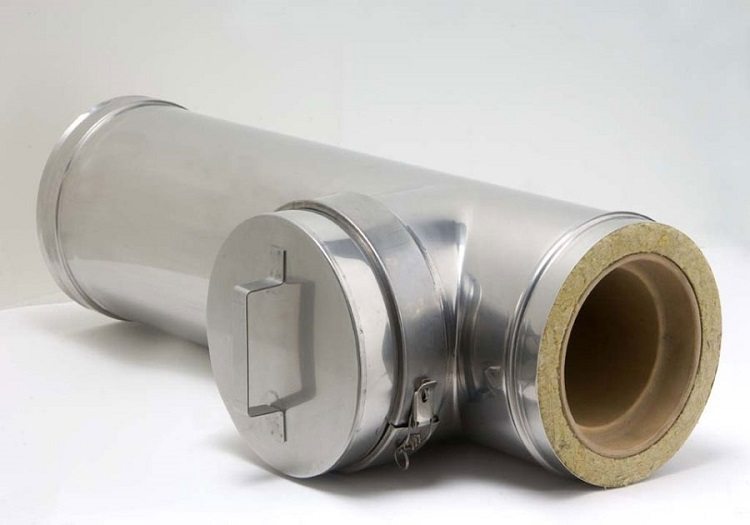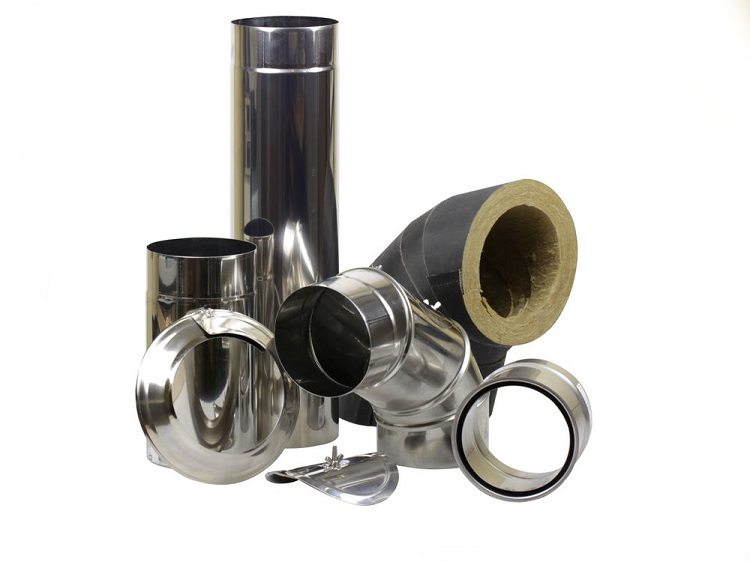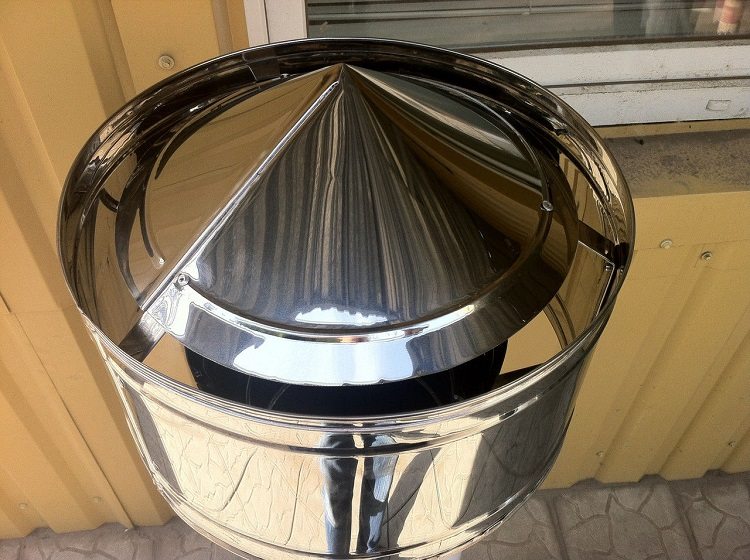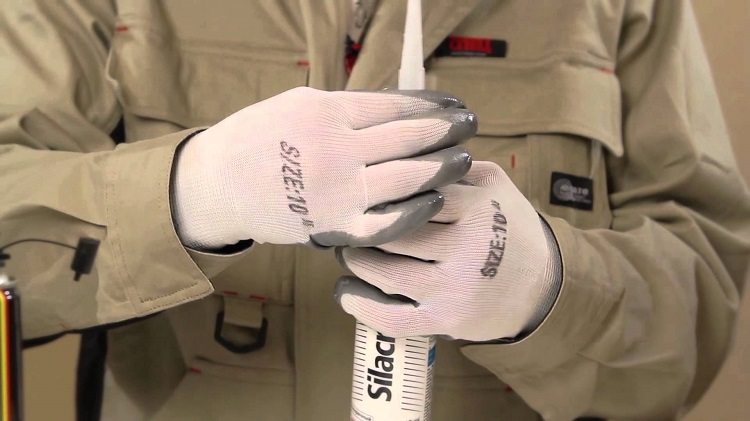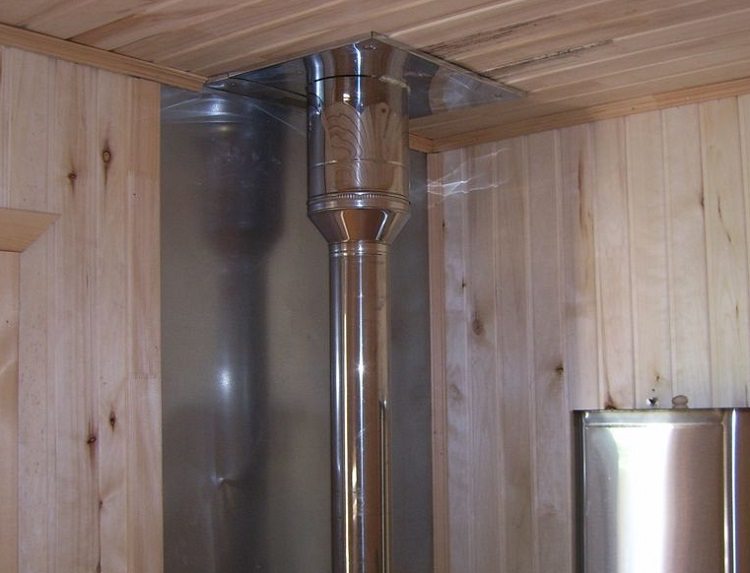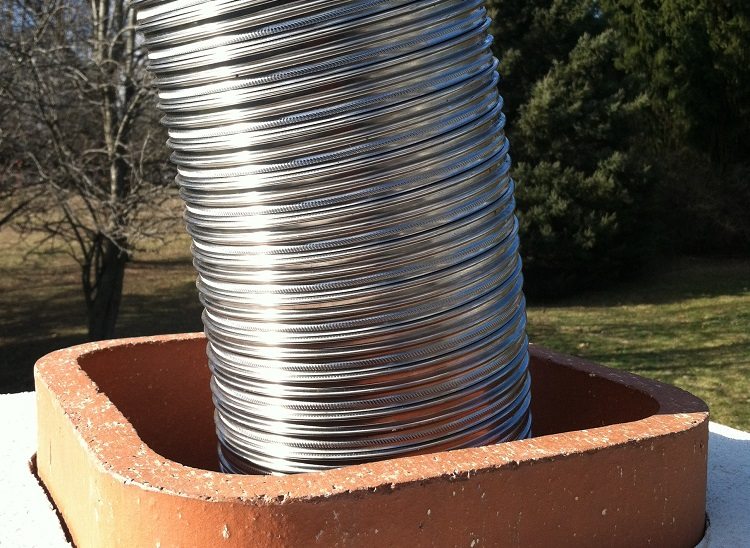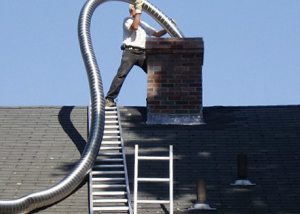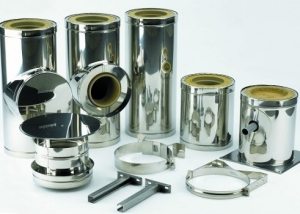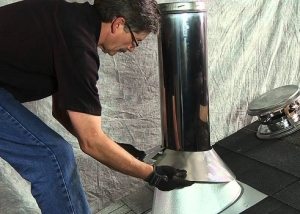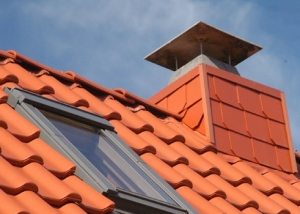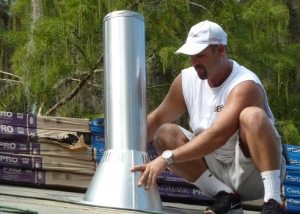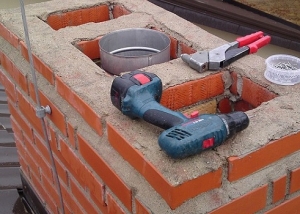The installation of any heating system of a boiler, fireplace, stove, etc., which runs on liquid, solid or gaseous fuel, necessarily requires the organization of ways of removal of combustion products. The most universal and acceptable option for solving this issue is the installation of a stainless steel chimney with your own hands. Such pipes meet the requirements of standards and allow you to quickly install the flue system of boiler rooms.
Content
Advantages of stainless steel chimneys
Stainless steel chimneys have several advantages:
- long service life;
- high strength;
- the possibility of implementing a system of any complexity;
- multifunctionality;
- low cost.
Stainless steel flues for fireplaces or stoves are more durable than brick. The latter are very susceptible to temperature fluctuations, which leads to their destruction. Stainless steel chimney is corrosion resistant. Steel products are not affected by increased humidity or dry air, high temperatures, chemically aggressive environments.
The chimney system made of stainless steel is characterized by a modular structure, which makes it easy to replace with your own hands any structural part if necessary. Steel chimneys are installed using special bends. Thanks to these elements, engineering blocks or architectural structures can be circumvented.
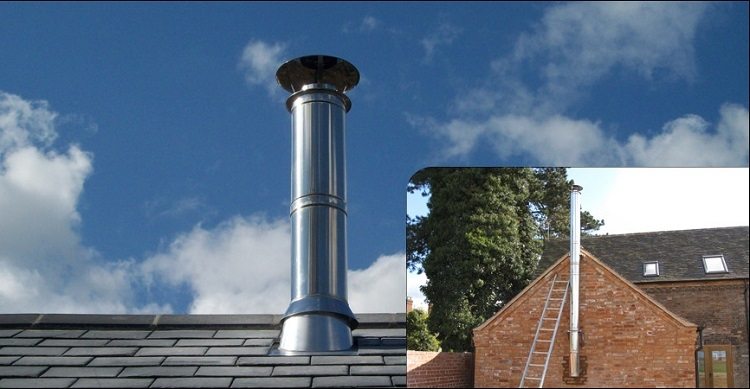
Stainless steel chimneys are more practical and reliable than brick, they can be used in houses of different types of construction
When installing a chimney from a stainless steel with your own hands, it is possible to shift the axis of the pipe in any direction without changing the location of the boiler or fireplace. The round section of the stainless steel chimney reduces the settling rate of the combustion products on its inner surface. Such pipes are less likely to need to be cleaned.
Types of chimney pipes
For the installation of stainless steel chimneys with your own hands, three components are used:
- Single layer steel pipe.
- Corrugated stainless pipe.
- Sandwich pipe.
A single-layer chimney made of stainless steel has a thickness of 0.6-2 mm. It has a low cost, but at the same time limited scope.
Note! Such a stainless chimney pipe can only be used inside insulated rooms.
A significant difference in temperature from the outside and the inside leads to an overspending of energy carriers, and the abundant formation of condensate affects the overall performance and operating life of the heating system.
Corrugated pipes for stainless steel chimneys are used for arranging curved transitions. Such products from other materials are not always sufficiently durable and heat-resistant. Stainless steel corrugated pipe withstands temperatures up to 900 degrees and effectively removes the combustion products of a gas appliance, boiler, fireplace, stove on other fuels.
The most versatile stainless steel pipes for chimneys are sandwich systems. Their installation can be done with your own hands both inside and outside the room. The pipe has a special layer of non-combustible material between the external and internal stainless steel coating. It has high thermal insulation performance. Often this layer is made of mineral wool.
Stainless steel grades
The grade of steel used for stainless chimneys affects the performance of the product.
Table 1
| steel grade | Characteristics |
| 304 | Looks like 316 steel, but contains fewer alloys. It has good weldability, corrosion resistance and high strength at fairly low temperatures. |
| 310S | It is resistant to temperatures up to 1 thousand degrees. |
| 316 | Enriched with inclusions of molybdenum and nickel. This increases the resistance of steel to chemical attack, heat resistance. It is well suited for organizing chimney exhausts of chimneys and boiler rooms, in which heating units operate on diesel fuel, wood or gas. |
| 316i, 321 | The most universal. They are distinguished by good ductility, resistance to temperatures up to 850 ° C and acid exposure. It is recommended to use pipes of these steel grades for wood-burning stoves. |
| 409 | Suitable for a device that runs on solid fuel (fireplace, stove). |
| 430 | Used for parts that are least susceptible to aggressive influences. Usually, outer shells are made from it, since a moist ambient atmosphere does not affect it. |
Range of chimney elements
Corrosion-proof details for chimneys are diverse in both assortment and capabilities. With their help, you can install the system of almost any structural complexity.
Direct stainless steel pipes for chimneys can be from 33 to 100 cm long. They are all characterized by bell-shaped mating, which does not require additional elements. The 45 ° bend (elbow) is used when it is necessary to deviate the direction of the chimney in a vertical section. 90 ° bends are often used to make the transition from a horizontal short section of a heating device to the base part of a chimney pipe made of stainless steel.
The tee is mounted at an angle of 45 or 87 ° at the installation site of the condensate collector or, when using two heating units, when connected to a common chimney system.
Important! The connection of two devices to a single system requires a separate approval of regulatory authorities.
Installation of the condensate collector is necessary to free the chimney of stainless steel from moisture and is carried out in the lower part of the main vertical section. Revision elements are designed for cleaning and regular monitoring of boiler flue systems.
The installation of a stainless steel chimney involves the use of its upper parts - a spark arrester, cap, a waterproofing skirt, as well as special elements for passing through floors, roofs, walls.
Stainless Steel Chimney Installation
After completing the design of laying chimneys for boiler rooms made of stainless steel, coordinating the scheme with regulatory authorities and purchasing the necessary parts, you can begin DIY system installation.
When installing a chimney from a stainless steel, it is advisable to additionally strengthen the pipe joints with a sealant that can withstand temperatures up to 1-1.5 thousand degrees. This will prevent the reduction of draft and the penetration of hazardous products of combustion into the room from the channel made of stainless steel. Chimney pipes equipped with special sections of the interface, therefore, their connection is not a difficult task.
If you are installing it yourself with your own hands, then special attention is paid to the passage of pipes from the stainless steel for the chimney through the ceilings. Some manufacturers produce items specifically for these purposes, but if necessary, you can make them yourself.
For mounting chimneys made of stainless steel on the external wall, brackets are used that are located at a distance of less than 2 m from each other. Mandatory is the support at the passage of the channel through the wall and the mounting of the audit compartment.
Chimney installation rules
To ensure good traction, the height of the stainless steel chimney pipe should be more than 5 m. Horizontal sections should not exceed 1 m. insulate chimney pipe. When passing the chimney of a fireplace, stove, boiler room through the roof with the presence of combustible materials, it is necessary to install a spark arrester.
When installing the system with your own hands, special attention should be paid to passing through floors, walls, and roofing. If the channels are not insulated and made of stainless steel, the chimney pipes should be located at a distance of at least 1 m from the ceiling.
Important! It is unacceptable to join the pipes in the thickness of the walls.
The minimum allowable distance from the ceiling, wall, floor is 70 cm. If a stainless steel pipe for a chimney passes through a non-combustible roof, then the minimum allowable gap between it and the ceiling should be at least 13 cm.
The total number of turns of the chimney is not more than three. When installing a stainless steel chimney with your own hands, the diameter of the pipe should not be less than the outlet pipe of the heater.
Important principles for installing chimneys
Corrugated stainless steel pipe can be used for internal and external chimney, transition from the outlet of the device to the main channel, brick chimney repairhaving bends.
When installing a horizontal or inclined section from a heating device or fireplace, the pipe is put on the previous one from the device. This ensures the free movement of combustion products along the channel. When installing the vertical part of the chimney, the subsequent section of the pipe is inserted into the downstream.
If the roof has a certain angle with the horizon, then the hole for stainless pipes should have an elliptical or rectangular shape. Carrying out installation, it is necessary that the chimney duct passes approximately in the center between the ceiling beams and rafters. Particular attention is paid to the requirements for height above the roof of the chimney cut.
In the case of using a stainless steel duct, the chimney pipe must be waterproofed from above so that moisture or precipitation does not penetrate the attic.
Stainless steel ducts are the most suitable flue system design. Its installation is simple if all requirements and recommendations are clearly complied with.
